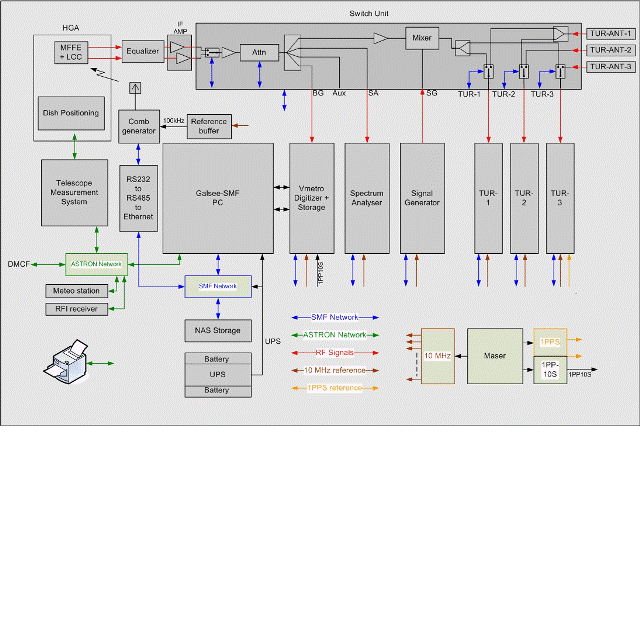Daily Image
06-04-2011Test-station for Galileo validation at WSRT
| Submitter: | SMF team |
| Description: | Galileo is the European counterpart of the American GPS system. Today, on Wednesday 6 April, we will demonstrate the first qualified monitoring facility for Galileo to the Italian space agency Thales Alenia Space (TAS-I) and to the European Space Agency (ESA). The system has been developed by ASTRON, in cooperation with S&T, the Technical University of Delft and TNO. It is an important building block because it provides critical information to about the accuracy of Galileo, which is designed to be more accurate than GPS. The extremely sensitive Westerbork Synthesis Radio Telescope (WSRT) is highly suitable to measure Galileo signals for this purpose. (Unfortunately, this also means that Galileo will interfere with many WSRT observations and will be a problem for Apertif science.) Since the beginning of 2007, a consortium led by ASTRON has been working on a "Signal-in-Space Monitoring Facility" (SMF) in one of the WSRT dishes to validate the signal properties and navigation data of the first four Galileo satellites. The signals transmitted by Galileo fall into the L-band, i.e. the frequency band around 1200 MHz where the WSRT is most sensitive (and where most of the Apertif science is planned). The high gain of the 25-meter dish antenna, and the low noise of the cooled front-end provide an excellent signal-to-noise ratio for an accurate determination of the signal properties. The high directivity of the antenna also assures that only the signals from the satellite under test are received. The consortium will complete the formal delivery of SMF with a demonstration on April 6 and a training on April 7 to TAS-I. The latter is subcontractor of ESA for the Galileo System Environment Emulator, of which SMF is a part. In the current planning, the first two Galileo satellites will be launched in August 2011. The second set of satellites will be launched a few months later. The images show the SMF block diagram, instruments in the RF cabin, the Galileo frequency spectrum, and the Galileo omni-antenna in Westerbork. |
| Copyright: | ASTRON |
| Tweet |  |
